MASH GROUP is reshaping the fashion industry landscape with a blend of cutting-edge brands, sustainable practices, and a visionary commitment to societal well-being.
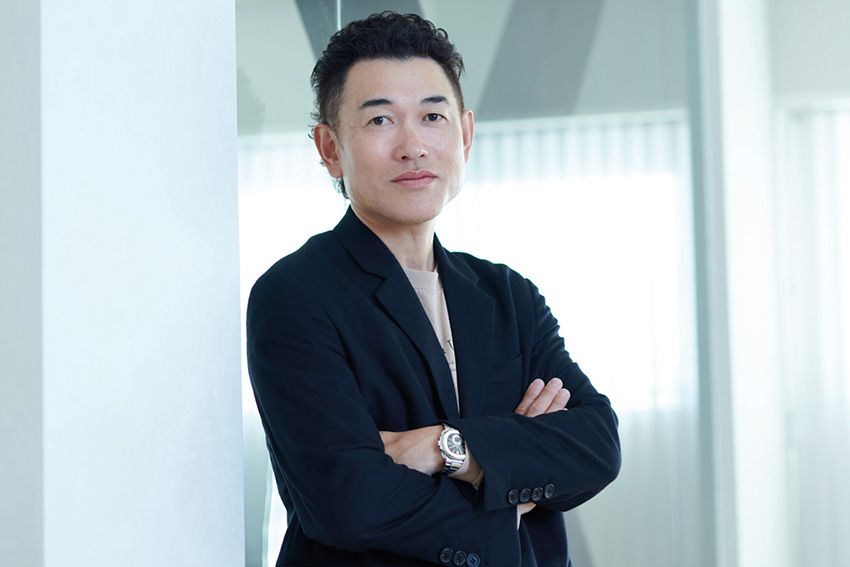
Over the next four years, the global fashion and apparel market is expected to grow into a USD 2 trillion industry, adding an average of USD 50 billion in yearly revenue. On top of that, an important increase in the luxury segment is also noted. This growth is expected to be led by the younger generations such as Generation Z or the Millennial generation, whose habits and demands differ greatly from previous generations. Moving forward, what do you believe will be the main growth drivers in this industry, and how do you adapt your product portfolio and marketing strategy to cater to these new consumer bases?
There has been a surge in the dynamics of the beauty and fashion industry. This is especially so when it comes to the consumption habits of millennials and Generation Z, who are becoming prevalent. There are now more consumers in their twenties and thirties purchasing high-end brands. Approaching these younger generations is a very important part of our business strategy. Using social media and other digital marketing strategies is key to attracting those generations, as they acquire information through smartphones. The characteristic of the consumers from the younger generations is that they easily get bored. It is, therefore, important for us to constantly provide new inspiration and attractions through new perspectives. One of the ways that we do this is, for example, by providing limited edition pink apparel during the Sakura cherry blossom season and special Christmas edition products at Christmas time. In the case of gelato pique, we have 46 campaigns annually as well as 38 collaborations to continuously create new ideas to attract the younger generations.
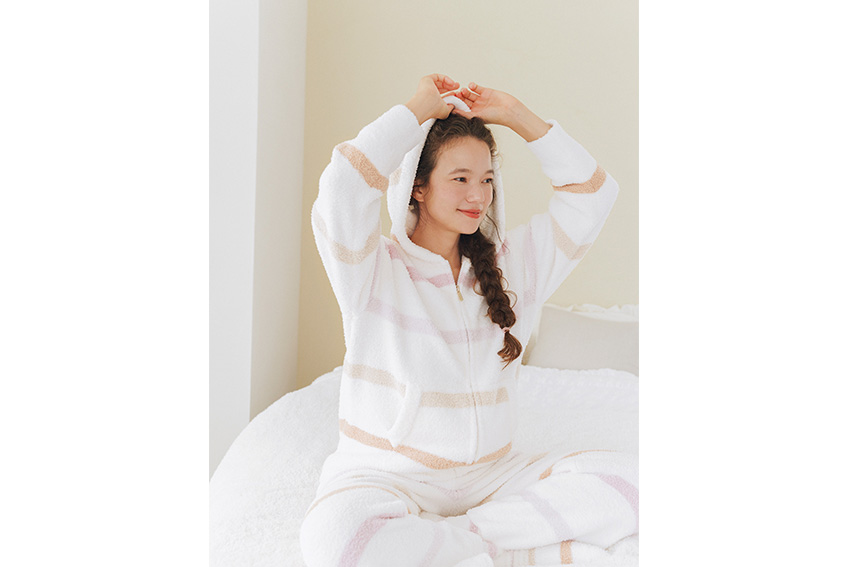
gelato pique
For many years, the clothing industry was known to have one of the longest supply chains, which led many observers to criticize its environmental impact. Growing awareness of sustainability and environmental protection has been rising, and this has had an impact on consumer habits and decision making. We are seeing more and more durable fashion items being made from sustainable materials, and large brands have also tried to distance themselves from the image of short product lifespans and wasteful consumption. What steps are you taking to improve the environmental impact of your operations, and what sustainable brands or products can you offer right now?
The fashion industry is indeed known for its wastefulness. This is also the case for other industries such as the construction industry and the food industry, which have a huge environmental burden. However, since fashion is more apparent to the eye, the fashion industry seems to be the target of environmental criticism. The main issue is the discarding of the apparel. It is therefore important to reduce the amount that is discarded. As for our company, we have been making attempts to reduce our CO2 emissions. For example, we have a project to digitize the amount of CO2 that we emit so that we can reduce it considerably.
The fundamental core value of MASH GROUP from a monozukuri perspective is that we create products that will not be discarded. We provide products that are neither cheap nor too expensive, and our products can be chosen as gifts. For example, since our clothes have high brand recognition and affiliation, they are retained by the person for a long time. If the person no longer wants to wear the clothes, they can give them to family members or friends. Our long-lasting products combined with our mindset is the key to sustainability at our company. The uniqueness of our company is that we are not within the low pricing range competition. The apparel business is more lucrative if you are operating in the low-price range of mass production and mass consumption. However, we have focused on the mid and higher price ranges.
You mentioned that Generation Z and millennials are very proficient in their use of digital platforms. This has changed the way that people purchase clothes. The younger generations are more digitally savvy. The Covid pandemic also showed that we could use e-commerce platforms to shop. Your company, of course, is no stranger to that. We saw that you recently released your Mash app, for example, which really centralizes what you offer. Could you run us through your digital strategy and utilization of digital channels within your group activities?
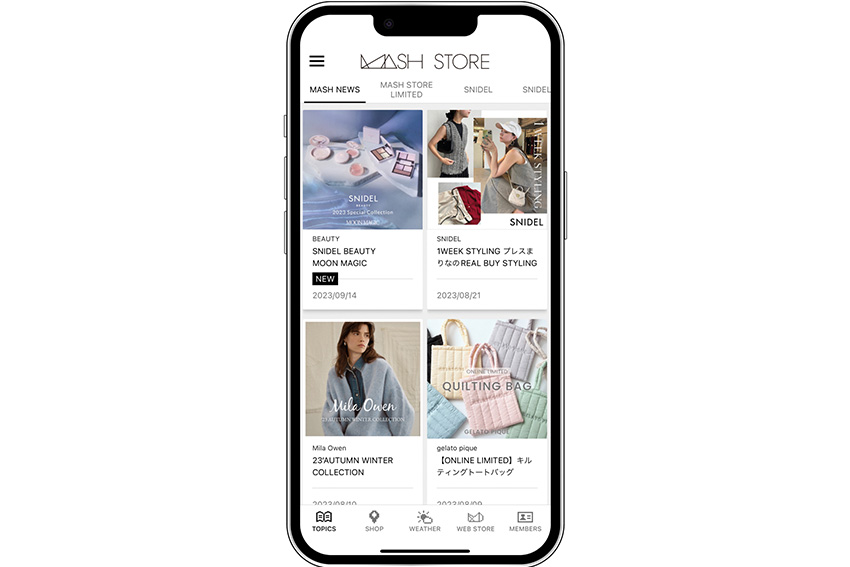
MASH STORE
Our digital strategy coincides with what we do in our stores. Nowadays, thanks to smartphones, people are overloaded with information. It is therefore important to provide live active information as well as a personalized customer service experience through digital means. For example, we use Instagram Live where we invite designers of the brands to chat with celebrities. Our in-store staff also discuss our brands and the stories behind them, and they inform the customers about our upcoming collaborations. We want to create a personalized experience similar to what could be experienced in a real store, using digital means to reach out to the younger generations.
That is very interesting. You mentioned creating a platform where the digital and physical worlds converge toward greater customization and personalization. That also shows in your recent strategy. Due to the rise of e-commerce, a lot of fashion labels and apparel companies have closed their physical stores and focused a lot on digital channels. MASH GROUP has done the inverse. You have opened a lot of physical stores recently. Why did you think it was a good moment to open more physical stores at a time when the apparel industry is moving online?
In the pre-Covid period, we established a scheme where we could use a digital platform to conduct our online sales. That allowed our shop staff to use our digital platform during the Covid period to conduct online sales directly with the customers. We had a new means of customer service. In May 2020, department stores across Japan had to close due to Covid. During that time, we were conducting sales using our digital platforms. We connected directly with the customers, who were unable to visit our stores. That was the only way to sell our products. It was very successful, and with additional incentives, some of our sales representatives achieved one of the best performance during that time.
We decided to expand our physical stores during the Covid period due to the successful experiences we had in the past. During the 2008 global financial crisis, the fashion industry was in a shambles. However, we took that as a positive opportunity and decided to open up stores in good locations. Thanks to that, we were able to greatly expand our sphere of business. Covid had a very negative impact on our company, and there was the possibility of bankruptcy during that period. We had to take important defensive actions such as strengthening our e-commerce channels. At the same time, however, we also took more aggressive actions and opened up new stores in good locations, as we believed that in the post-Covid period, this would be a great addition to our company’s strategy. I can say that it has been very successful. During the Covid period, department stores encountered some difficulties. But we were able to establish good conditions for rent which have continued until now.
Although you have emphasized the fact that we have seen this shift towards e-commerce platforms which has greatly changed consumer habits, now that Covid is behind us, we are seeing many brands trying to reconnect directly within their physical stores by offering unique experiences. For example, Mizuno has sports centers in Osaka where customers can test their products in real conditions to see if they fit their needs or not. These unique experiences cannot be enjoyed online. Earlier, you mentioned that personalization is a key selling point for your products. What other unique experiences do you offer to your customers to bring them back to your physical stores?
Thanks to the curiosity of the younger generations post-Covid, they are actively coming to our stores. This has been helped by our new campaigns. We are very grateful for that. At the same time, for example, at the SESAME STREET MARKET, we have events such as a parent and child drawing session in the morning, with the shop being opened in the afternoon. Providing these types of experiences in the stores through these events is also very important. However, we must take into mind that there is a limit to the space in the stores. We are also trying to create a merit scheme for the customers who purchase more of our products. For example, we invite them to parties at our headquarters. We are trying to provide an in-store experience augmented by additional experiences the customers can have according to their purchases.
Your company was established in 1998 as a graphic design company. You then evolved and entered into the fashion industry, before expanding into the beauty, sports, and food industries among many other businesses. As a reminder of its origins, you adopted “WELLNESS DESIGN” as your company slogan in 2015, signifying that it is the most important thing. Can you run us through your company philosophy and the core beliefs encapsulated by this “WELLNESS DESIGN” concept?
Our interpretation of “Wellness Design” is creating smiles across all generations. This means enriching the daily lives of people through the solutions that we provide whether that be through fashion, makeup, or food, for example. These elements enrich the person’s life and lead to a higher quality of life. As part of this philosophy, we have redesigned some of our company’s products. For example, the sale of our Snidel brand fur coats amounted to over JPY 200 million of sales. However, we decided to change from fur to eco-fur and did so by working together with the craftsmen. In providing this eco-fur, our purpose is to send out the message of sustainability and “Wellness Design” to our customers to receive sympathy and grow together through our concept. That is our overall vision. Also, regarding our food business, we also provide organic food that is healthy for the body. We are always mindful about providing wellness to our customers through our design solutions.
In 2005, you entered the fashion apparel market which are things that a person wears. You then moved into cosmetics, which are things that you put on your skin. You more recently evolved into food which is something that is ingested. There is a move in your activities from physical appearance to interior well-being. It is quite unique when you look at other fashion brands. Why did you decide to evolve in such a unique fashion going from aesthetics to wellness?
Our product development concept is to provide a product that does not become a burden on a person’s life and one that is affordable based on the salary of the person. We do not want to create very high-end expensive products. Rather, we want to create more affordable bags, apparel, shoes, or food, for example. Society has also changed. Before, wearing luxury brands gave a person a luxurious mindset and it became a branding of that person. However, now that is not only confined to apparel or to a person’s exterior. It is also the case for the interior as well. Consuming good food and nutrition is also now part of a luxurious life. This expansion of the definition of luxury has now become more comprehensive. Through the accumulation of the product prices that we provide, a customer may purchase a selection of our products equivalent to the price of a luxury bag. The amount of time, luxurious experience, and wellness that we provide is massive.
Along with your diversification into beauty and food products, you also strengthened your offerings for men’s apparel and baby segments. Why did you decide to expand in these two fields, and what strategies have you implemented to make this expansion successful?
During the Covid period, there were big changes in the lifestyle and workstyle of people. We currently have a brand called AOURE for men’s apparel that provides comfortable products that are not too formal and not too casual. They are very functional and lightweight outfits. There was a big increase in remote work during the Covid period, and bankers, for example, no longer wear ties on Mondays. These changes in fashion inspired us to provide more functional and comfortable wear for men.
We once invited some bankers to one of our events. It was their "casual day,” so they could wear whatever they want. They wore their own private clothes rather than suits, and I've heard that they have trouble dressing and refining their sense of style. That is why it was important to create a brand to cater to those people.
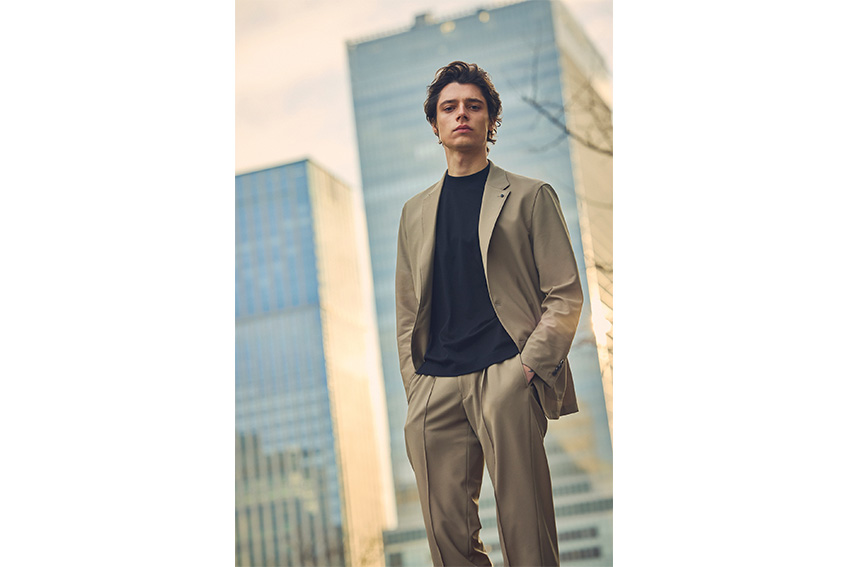
AOURE
We can provide the men with our AOURE apparel. For ladies, we have FRAY I.D. It is a rapidly growing market for females with a target of JPY 10 billion in turnover. Previously in Japan, there were only a few brands for working ladies. The style was quite plain and similar. While it was good for work, it was not suitable for going out on Friday nights to a fashionable restaurant or for going on a date. However, they needed to be purchased using the ladies’ own salaries. Providing them with more fashionable options for their work style is the concept behind our FRAY I.D brand.
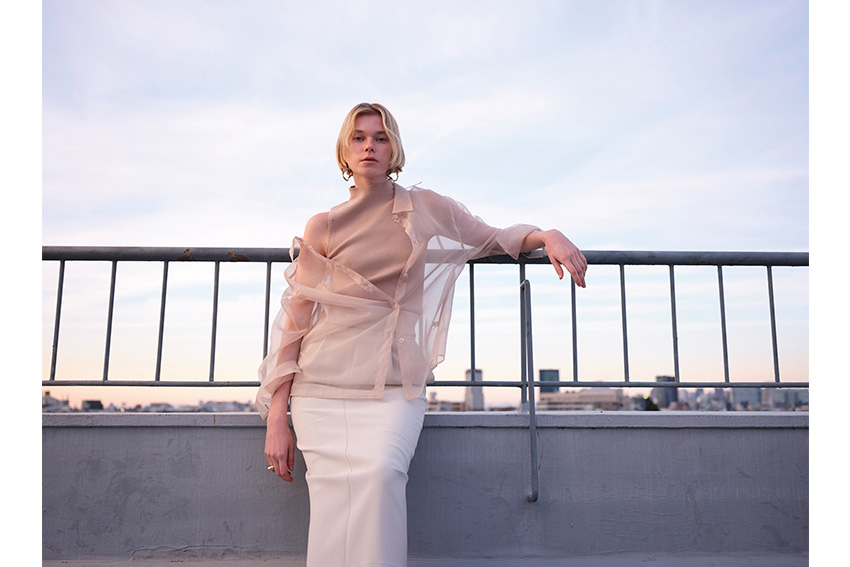
FRAY I.D
I am happy to say that our group is creating new trends and opening new pathways in changing the standard of Japanese fashion. For example, our FRAY I.D has converted the mindset of working ladies so that they can now wear more fashionable items in their workplace as well. Also, the working environment has now changed to accommodate more free fashion. At the same time, for example, gelato pique has created the new idea of enjoying outfits within the home while SNIDEL has combined streetwear and elegance. Providing new alternative ideas and values to the norm is what we are good at.
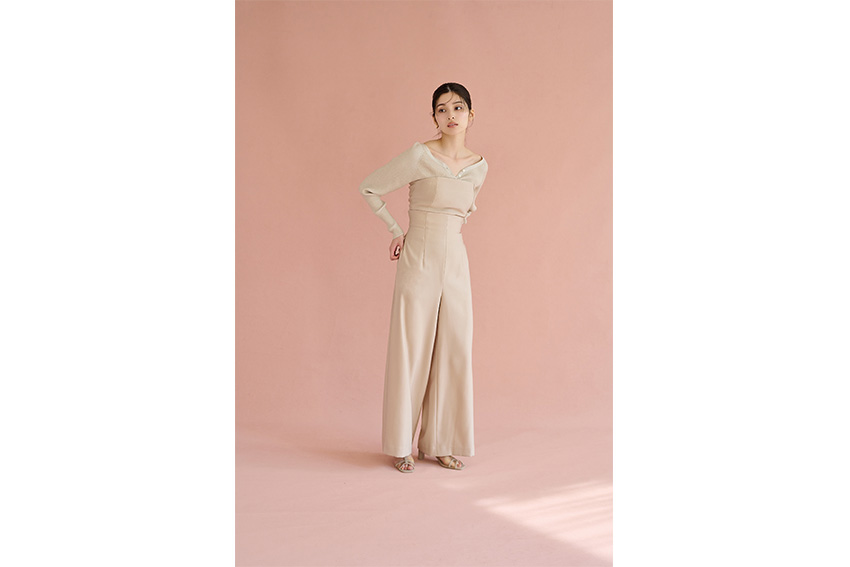
SNIDEL
Another contribution we have made is through our yoga wear and brand emmi. Conventionally, most of Japanese working ladies were required to wear formal heels to the workplace. However, that is not good for the feet. We have been promoting the wearing of sneakers together with formal wear. Thanks to that, we are slowly but surely changing the working environment for ladies.
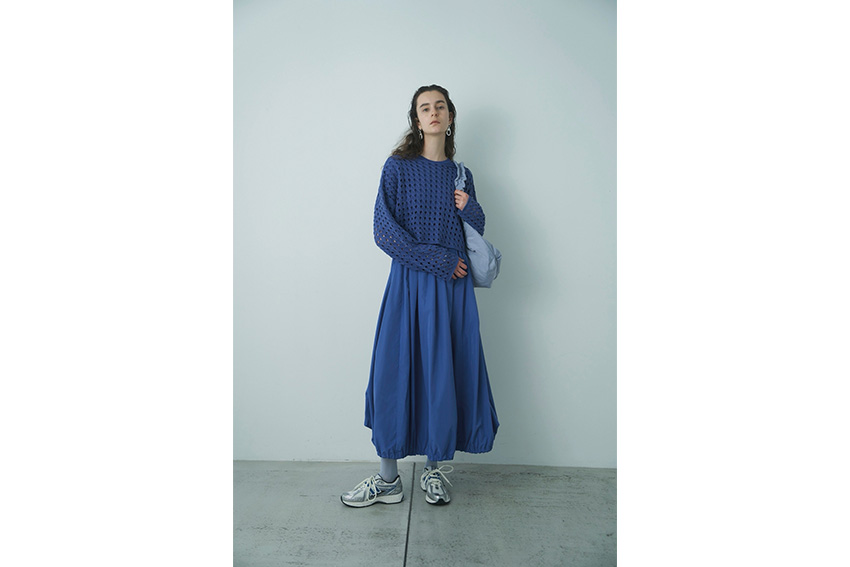
emmi
We have been serving the Japanese fashion market for over two decades. For the past 20 years, the men’s fashion floor and department store brands remained the same. This was also the case for the ladies' office wear as well as childrenswear and babywear. We wanted to change the situation and create more options by freeing up the fashion in these fields. We started with ladies' wear, then moved on to menswear and we are now focusing on babywear.
Babywear is a tough market in Japan as there are many big competitive companies such as Miki House or Pigeon. Is there a particular segment that you are targeting?
Companies such as Miki House and Familiar have longstanding brands. However, we want to create new value within the field. Likewise, in the department cosmetics floor, for example, all the brands have remained the same for decades, with European luxury brands remaining popular. In this context, we wanted to provide organic cosmetics options to our customers. We finally succeeded in having a store within the department stores’ cosmetics floor for our natural cosmetics brands Celvoke and SNIDEL BEAUTY.
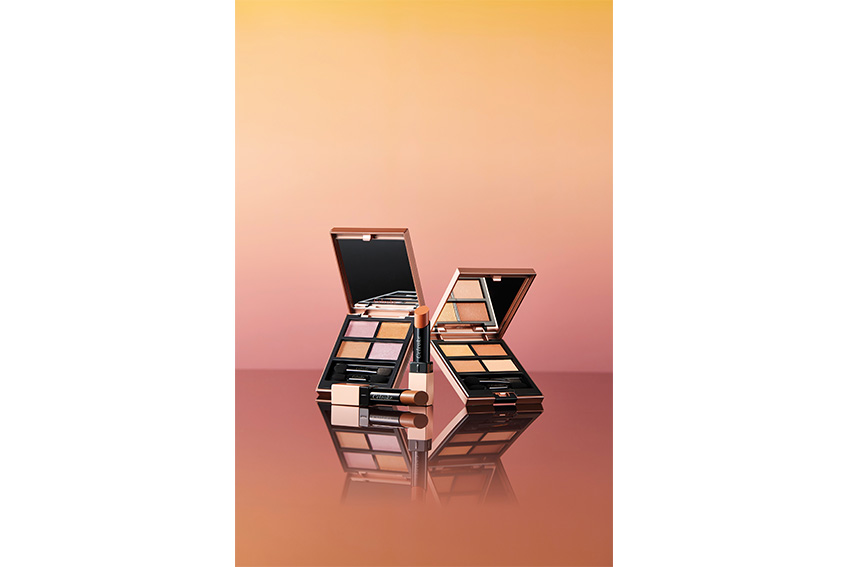
Celvoke
In November 2022, Bain Capital announced that it had reached an agreement with MASH GROUP to acquire a majority stake in the company. With its headquarters in the US, Bain Capital has experience in Japan providing support to consumer brands such as Canada Goose or Caver Korea for example. What synergies have you been able to create and leverage on between Bain Capital and your company?
One of the reasons why we decided to partner with Bain Capital was that we decided to IPO our company. The IPO process requires a massive amount of work. It also requires specialized knowledge and personnel. We had a choice to have specialized people on board. However, we decided that working together with specialists who already existed in the market was a more viable option for us. That has allowed us to focus more on the monozukuri aspect of our company.
Another reason for partnering with Bain Capital was that we had been expanding so rapidly that we were experiencing shortages in staff members. Bain Capital has scouting resources. When it comes to overseas operations and corporate management, working together with their specialized experience is a great addition to our company.
You mentioned the fact that you could leverage and create some synergies with Bain Capital to enhance your international operations. In recent years, you accelerated your international investments. On top of your subsidiaries in Shanghai, Hong Kong, and Taiwan, you also opened Gelato Pique USA to sell your luxury loungewear in the North American market. Your company also increased its licensing business bringing foreign brands such as Sesame Street into the Japanese market. Moving forward, where would you like to continue your international expansion? Do you have any specific locations in mind?
We have two pillars when it comes to our overseas business. First, we have an export business for our brands to sell our products overseas. However, with the current depreciation of the JPY, we are struggling. Due to the currency rate, the price range of our products in Japan is different from overseas, and this is negatively impacting our company. At the same time, however, we have a brand-importing and licensing business that imports brands from overseas, which is doing extremely well. Due to inbound tourism, there are more sales of brands such as Barbour. Furthermore, we are currently trying to create a third pillar of our overseas business centering around our factory in China developing its own unique products that can be exported to Japan and other Asian countries.
We have three core strategies moving forward. The first is to export our Japanese brands overseas. The second is to import overseas brands to Japan, while the third is to create new brands centering around our Chinese production base and export them to the neighboring countries.
We are very interested to know more about your licensing business. What specific role will it have within your expansion strategy, and are you looking for new licensing partners? If so, what does a partner of choice look like?
We have two different strategies when it comes to our licensing business. We represent overseas brands in Japan. That involves importing their products and selling them in the Japanese market. In the fashion field, we have Barbour, while in the lifestyle field, we have ecostore. On the other hand, we have our SESAME STREET MARKET and MUCHA brands which involve taking the IP and licensing agreement and jointly developing the branding and the products in Japan. The first type of relationship is dependent on overseas brands while the second is reliant on our co-development.
There have been cases in which companies that had long-standing, influential licensing agreements, which accounted for the majority of their sales, were driven to the brink of bankruptcy after the agreements were terminated. It is therefore very important for us to balance our pillars in the licensing business. We are currently in discussions to add two or three more brands to our licensing business, and we are also discussing introducing some new IPs to Japan. This branding of IPs that we do is a very unique business model. The expertise and experience that MASH possesses put us in a very advantageous position for providing proposals and products to international IPs. For example, we could make a Newsweek logo t-shirt that people can wear to work. Working together with well-recognized brands means that we can easily make it into a large-scale business.
Please imagine that I have USD 1,000 to spend and I am in a MASH GROUP store, where all of your brands are located. What should I buy for my wife who is around 30 years old?
I would recommend buying dresses, sneakers, and cosmetics. I would also recommend buying pajamas. I highly recommend buying the whole set.
Your company was founded in 1998. We know that there have been a lot of exciting changes recently from your licensing business to your alliance with Bain Capital. If we were to come back to interview you again in 2028 for your company’s 30th anniversary, with all of these changes that you have made in mind, where would you like to see the company at that time? What objectives and ambitions would you like to have achieved by then that you could share with us in that second interview?
While 2028 will be our 30th anniversary, it will only be a passing point. The ultimate goal that I have for the company is to make a small social contribution to the betterment of society. I want to do this by changing the small standards within society and creating a more comfortable environment and situation for people to live in. By increasing the number of people who feel more comfortable with the new standards that we provide, we want to lead society to a better place slowly but surely. I also want our employees to be very much engaged in this social contribution process. That is my goal for the future.
0 COMMENTS